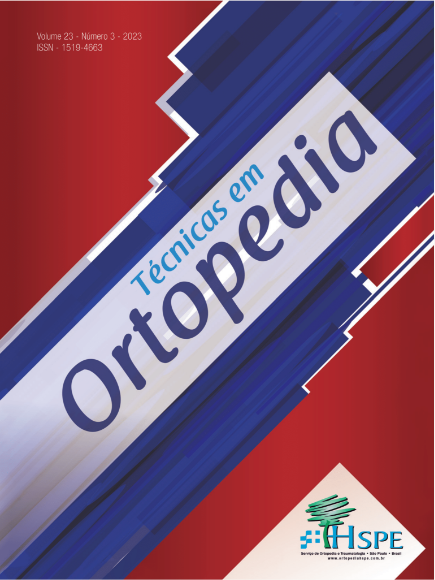Pé talo vertical: tratamento pelo método Dobbs – “Ponseti invertido”
DOI:
https://doi.org/10.61443/rto.v23i4.442Keywords:
pé talovertical congênito; método Dobbs; Ponseti invertido; órtese.Abstract
Congenital vertical talus is a condition characterized by dorsal displacement of the navicular over the head of the talus, leading to a flat and rigid foot with a valgus and equinus hindfoot, and a dorsiflexed and abducted midfoot and forefoot. We present an update on the treatment of this condition using the Dobbs Method. This method involves the use of plaster casts, minor surgery, tenotomy, and orthoses, providing an alternative to traditional surgery.
Downloads
References
Miller M, Dobbs MB. Congenital Vertical Talus: Etiology and Management. J Am Acad Orthop Surg. 2015;23(10):604-11.
Dobbs MB, Purcell DB, Nunley R, Morcuende JA. Early results of a new method of treatment for idiopathic congenital vertical talus. J Bone Joint Surg Am. 2006 Jun;88(6):1192-200.
Cummings JL, Hosseinzadeh P. Minimally Invasive Method in Treatment of Idiopathic Congenital Vertical Talus: Recurrence is Uncommon. J Pediatr Orthop. 2022;42(9):503-8.
Cummings JL, Hosseinzadeh P. Untreated congenital vertical talus deformity in walking age: Minimally invasive method works. J Pediatr Orthop Part B. 2023;32(1):1-7.
Cummings JL, Hosseinzadeh P. Relapsed Congenital Vertical Talus Deformity: Outcomes of a Modified Minimally Invasive Method. J Pediatr Orthop. 2023;43(3):E236-43.





